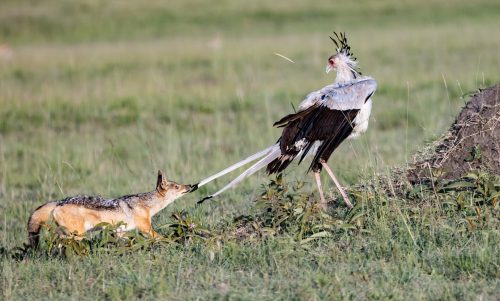
As a child, I lived for the concept of play. I would wait hours in school dreaming of when I got to go outside. I remember clearly those were the moments I felt the most alive. Angama has blessed me with an opportunity to regularly experience that same feeling of excitement I had thirty years ago. When I'm on a game drive in the Triangle it's as if I have been given permission to go play outside — and what a glorious playground it is.
We are not the only ones who like to play, however. Surprisingly enough, Robert came across a jackal and a secretary bird in what we can only describe as a few rounds of tug of war. He then caught a young hippo in a toothy game of King of the Hill with a crocodile.


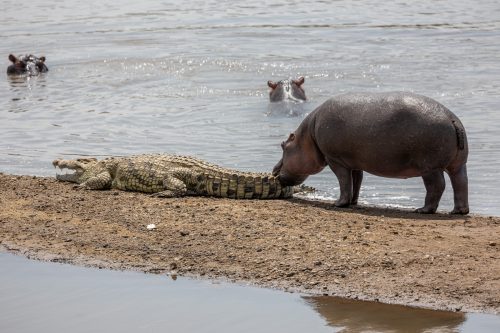
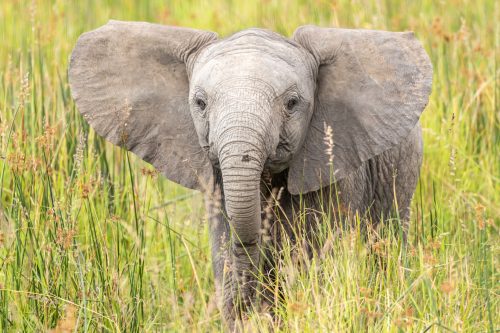

As Robert mentioned last week, the crowds are here — both people and animals have come from far and wide to spend time in the Mara. It has been amazing to hear the sounds of hundreds of thousands of wildebeest all at once as they move around you. The herds operate as a cohesive unit and just like water they flow from area to area. One part of the herd will branch out and the rest will flow, stream-like, creating a single file line that can go on for kilometres. As they navigate the lands, they are aware of the dangers that lurk in the long grass and the murky waters of the river. Nothing in this epic journey is given, every step is earned.
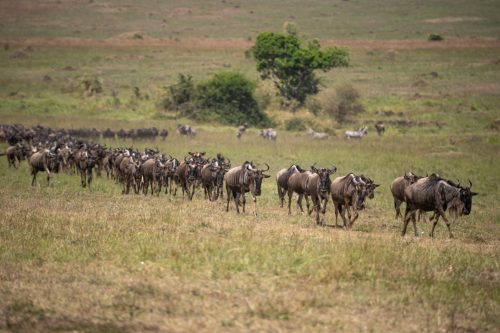
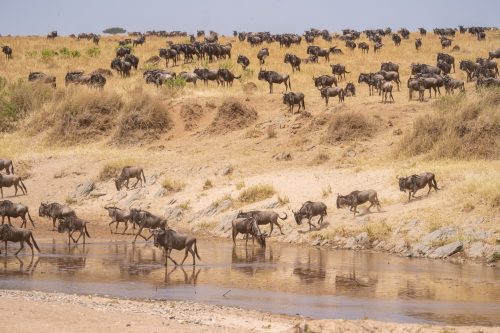

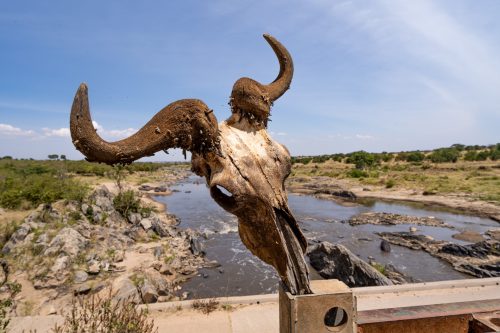
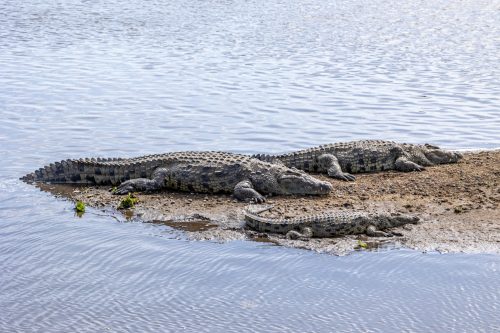

One day, we approached a scene of carnage and slowly put all the evidence together as a gruesome story unfolded. A male and female lion were both feeding. The closer we got, we noticed that the male lion was literally lapping up and drinking amniotic fluid from a wide open cavity of a zebra. Only a few meters away, the lioness seemed to have something in her mouth. Upon closer inspection, we realized that she was carrying the fetus of the dead zebra. We watched as she meticulously licked and cleaned the body and proceeded to eat it. I will not lie, this was difficult to watch; being a witness to nature taking its course in this way gives me a strong sense of appreciation and gratitude for every moment in health. We live and abide by the same laws of nature that govern the ecosystems we observe and the cycle of life that no organism can escape. Each moment of consciousness is a pure gift.
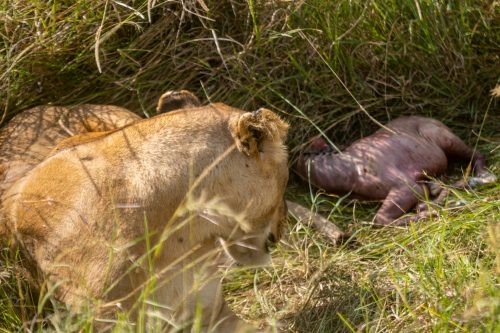
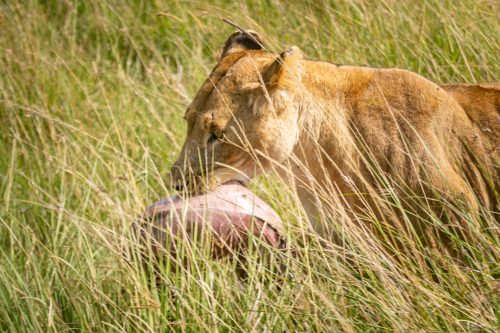

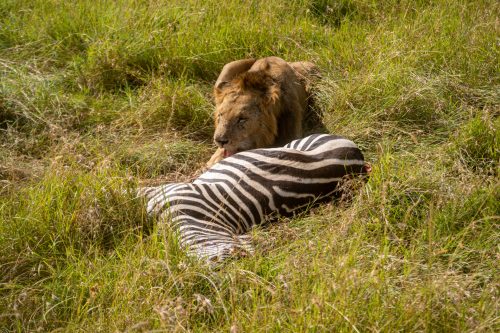
Vast open areas are good places to look for cheetahs and sure enough, we spotted a solo male cheetah in one of the Mara's many open areas. Male cheetahs are slightly larger than females and have larger heads. It is not very common to see solitary males that are not without a coalition.


We can confirm that all 4 of the Inselberg males, Manywele, Ginger, Ruka and Splitlip, have been mating — with females from the same pride. This pride is called the Purungat or Maji Ma Chafu. This is a tactic to ensure a higher chance of cubs surviving childhood. Ruka, whose eye was recently hurt, is healing well as you can see from the images. The fight for territory and mating rights are providing a constant thrill. As mating and new generations grow we see the complexities of the social structures of these amazing creatures unfold before our very eyes.

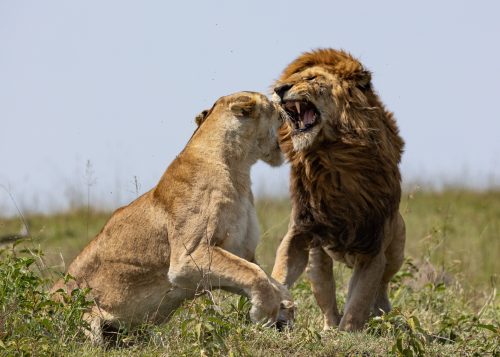
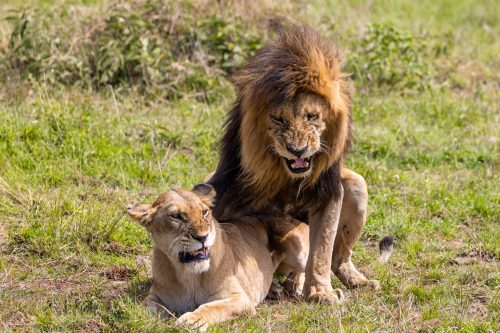
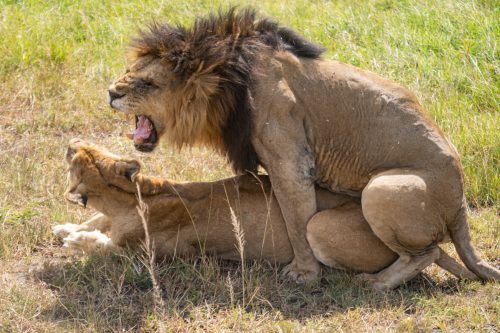

The mothers have to be careful with their current cubs because the 4 Inselberg males are not the fathers — they are a group of males that have since crossed into the Serengeti. We saw a female from the pride hunt a baby wildebeest and bring it to her young cubs stashed away from the other males. New generations begin to write their stories into the tales of the Mara.

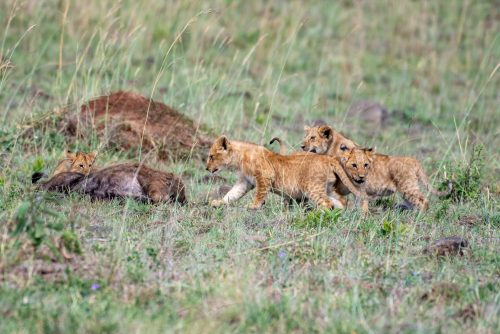
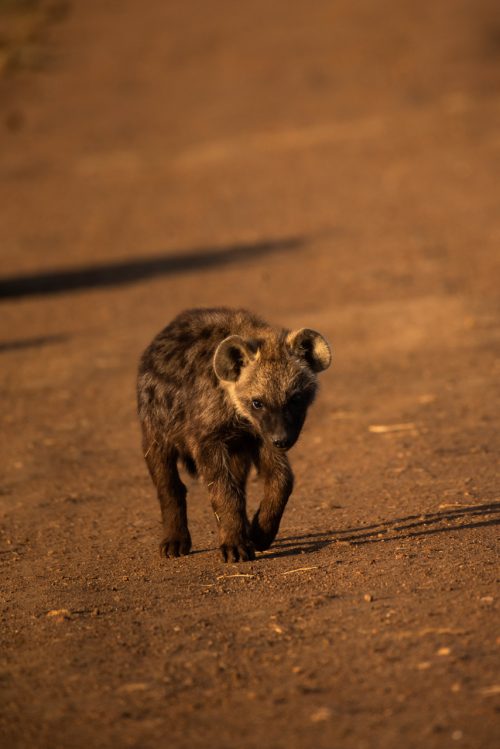
This time last year, the hyena cubs of the northern clan were terrorising the road below Angama Mara much to our delight.
Filed under: This Week at Angama
Subscribe for Weekly Stories
Comments (0):

Out of Africa